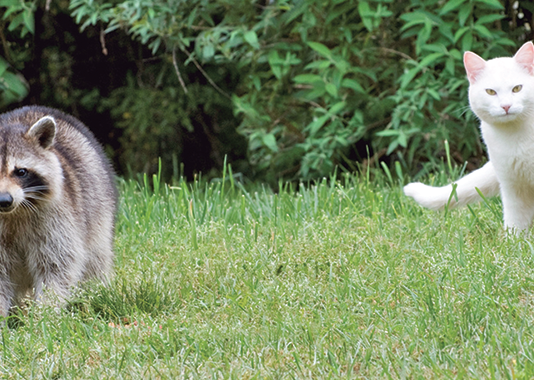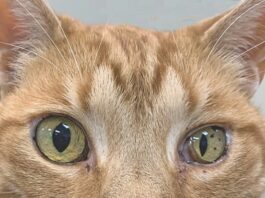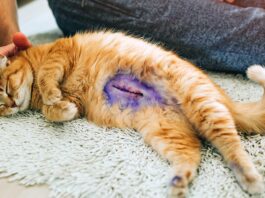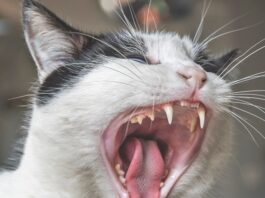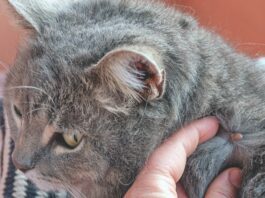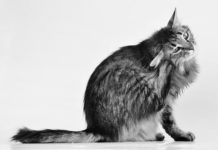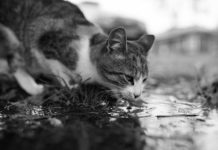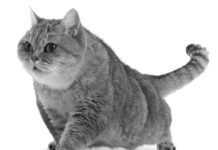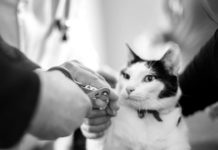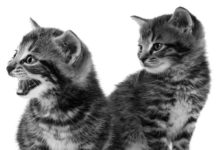Studying the Genetic Basis of Feline Heart Disease
The disease takes several forms: hypertrophic cardiomyopathy, where the walls of the heart are thick; restrictive, where the walls are stiff; dilated, where there is thinning and weakening of the heart muscle, and arrhythmogenic right ventricular, where fat and scar tissue replace heart muscle, primarily in the right side of the heart.
Geography’s Role in Feline Ear Infections
Ear infections are relatively uncommon in cats - infections of the external ear occur twice as often in dogs. However, you should be aware of these significant facts: A study shows that geography can determine if your cat is likely to develop an ear infection. Left untreated, an infection can become chronic, causing pain and irreparable damage to the ear canal or eardrum. You can become the first line of defense in identifying an ear infection. Simply check your cats ears by giving them a quick rub - something you probably do everyday. Whether your cat shows pleasure or discomfort is a clue to the ears condition.
Cats Likely Candidates for Giardia
Every time your cat nuzzles up to a neighbors cat or scratches in wet soil where another cat has relieved himself, he runs the risk that he will pick up an uninvited guest: the parasite called giardia. It survives throughout the country in any place thats wet or damp, and thrives inside its hosts. Infection rates will vary depending on geographic location but one study has shown the rates to be about 10 percent in cats, says Brian Collins, DVM, Section Chief of the Community Practice Service at Cornell University College of Veterinary Medicine.
Cats With Gum Disease Sought for Study
Cornell is seeking cats with chronic, non-responsive gingivostomatitis for a clinical trial using stem cells. The disease causes severe, painful inflammation affecting the gums and mucosa in the mouth. The cause remains unknown. The Dentistry and Oral Surgery Service at Cornell University Hospital for Animals will use the cats own stem cells in the research. Current treatments are less than ideal, unpredictable and associated with possible complications.
Over Half of Cats are Overweight; Overactive Thyroids in Cats
Pets were evaluated as ideal, overweight or obese. The APOPs survey also found that 54 percent of dogs were overweight or obese. The findings were nearly the same in 2014, when the association cited a fat pet gap, in which another of its surveys revealed that 90 percent of owners of overweight cats and 95 percent of owners of overweight dogs incorrectly identified their pet as normal weight. No one wants to think their pet is overweight, and overcoming denial is our first battle, said APOP founder Ernie Ward, DVM.
The Most Accurate, Non-Invasive Means to Measure Blood Pressure
There are number of ways to measure the blood pressure in the artery of a patient. The gold standard is the placement of a catheter directly into the artery and measuring the pressure within it, referred to as blood pressure, using a device called manometer. Although this technique is extremely accurate, it requires the placement of an arterial catheter (which generally requires sedation/anesthesia in veterinary patients) and specialized equipment, and is associated with risks such as bleeding and infection. For these reasons, this invasive method of measuring blood pressure is not usually employed in cats during a routine veterinary visit.
In the News: Persians DNA May Hold Clue to Their Heart Disease
Winn Feline Foundation has awarded a grant for the evaluation of DNA variants associated with hypertrophic cardiomyopathy, or HCM, in Persians. HCM is the most common cardiac disease in cats. Previously, genetic mutations have been found in Maine Coons and Ragdolls, which led to genetic tests for screening before breeding.
Claws Reveal Cats’ Health Status
Cats depend on their claws to grip while climbing. They serve as weapons in a fight, hold their prey and release scent to declare ownership of your sofa. While many cats are fastidious about grooming, indoor kitties depend on their owners to keep their claws in top shape. They dont do enough digging and scratching on abrasive objects to keep the claws short.
One Challenge in Pancreatitis: The Lack of Definitive Signs
My cat has recently been diagnosed with pancreatitis. The veterinarian explained to me that it can be difficult to diagnose, but he feels confident that this is the correct diagnosis and has started treatment. My kitty is still not eating well, and Im wondering if it is possible that something else is going on.
Acupuncture for Cats Heads Mainstream
Dusty was a black and white cat who hissed, swatted and squirmed anytime a veterinarian or technician tried to restrain her for an examination or, worse, tried to draw blood or give an injection. This same cat, however, transformed into a picture of serenity and calm during acupuncture treatments.
Treating Infectious Peritonitis; Cornell Study on Anesthesia
Feline infectious peritonitis, or FIP, a viral disease that is nearly 100 percent fatal, has been successfully treated in a research project at Kansas State University. Collaborators in diverse fields developed an antiviral compound for the feline coronavirus associated with FIP. Manuel Martin-Flores, MV, , ACVAA, of the Cornell University College of Veterinary Medicine will present preliminary results of his research on safer anesthesia for cats at the annual meeting of the American College of Veterinary Anesthesia and Analgesia in September. Dr. Martin-Flores is one of only 220 anesthesiologists board-certified worldwide by the college.
The Number 1 Reason for Lackluster Coats
Fur, primarily made of the protein keratin, grows from follicles in the skin. While human follicles each grow a single hair, animal follicles may grow many. Each follicle has an oil gland to lubricate the skin and hair, and to keep the coat lustrous. If your cats coat turns dull and dry, you may suspect a medical problem and make a veterinary appointment. Meanwhile, you might also want to check the labels on his food.

